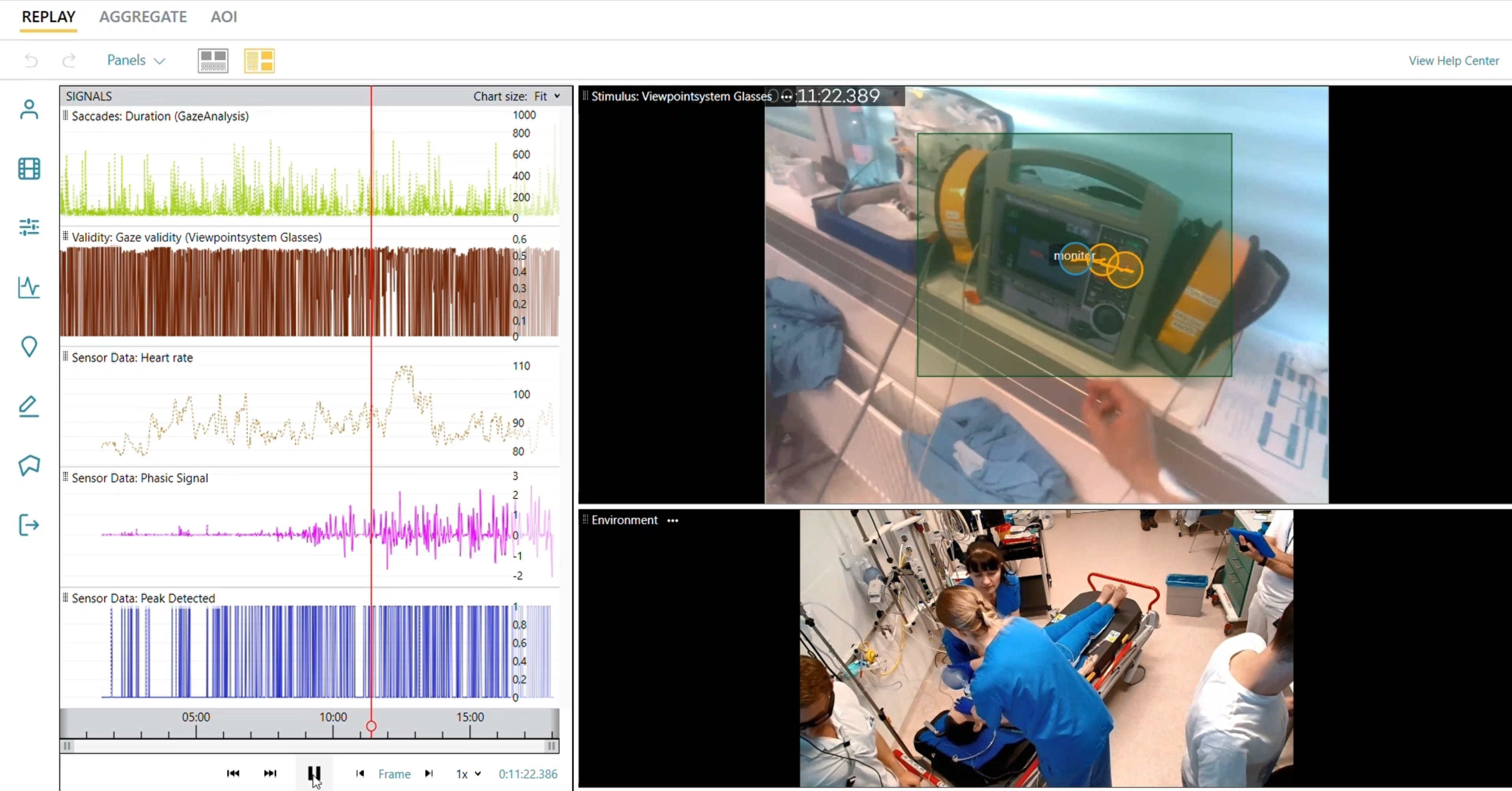Differences in visual behavior and cognitive load between experts and novices in medical emergency simulation
Aim and Research Question(s)
The goal of this thesis' pilot project was to contribute to the body of evidence on visual gaze behavior and cognitive load measurement during a medical simulation scenario. The research questions were: 1) Do medical experts and novices differ in gaze behavior and cognitive load during simulation? and 2) What is an appropriate sample size for detecting statistically significant differences between groups?
Background
Medical simulation training using specialized equipment, like mannequins, has been shown to improve learning outcomes and patient prognosis. [1] Recent focus includes analyzing gaze behavior in connection with decision-making strategies, and cognitive load during these scenarios, using biosensors such as eye-tracking glasses and galvanic skin response (GSR) sensors, to enhance simulation training. [2,3]
Methods
Twelve participants, divided into expert (n = 5) and novice (n = 7) groups based on their experience in adult emergency medicine, completed a standardized emergency simulation scenario wearing eye-tracking glasses, a GSR sensor, and a pulse tracking chest strap. Afterward, they filled out questionnaires on subjective workload and sensor experience. The results were analyzed using iMotions software and Python scripts.

Results and Discussion
Visual behavior during the scenario was similar between groups, with experts and novices, for example, spending similar amounts of time fixating on monitoring equipment (20% vs. 13% of the overall scenario for experts and novices, respectively, p = 0.1061). Objective cognitive load measures, such as heart rate variability (HRV), also showed no significant group differences, although intragroup variations were detected. A sample size of 34 was deemed sufficient for group comparisons. GSR data were too prone to artifacts for proper analysis. Participants found the equipment feasible and well-accepted.
Conclusion
Experts and novices showed similar visual behavior patterns, as well as cognitive load parameters. At least 34 people should be included in a follow up study to allow proper statistical analysis of differences.
References
[1] R. Greif et al., “European Resuscitation Council Guidelines 2021,” Resuscitation, 2021. [2] J. J. G. Van Merriënboer and J. Sweller, “Cognitive load theory in health professional education,” Med Educ, 2010. [3] M. R. White et al., “Getting Inside the Expert’s Head: An Analysis of Physician Cognitive Processes During Trauma Resuscitations,” Annals of Emergency Medicine, 2018.
